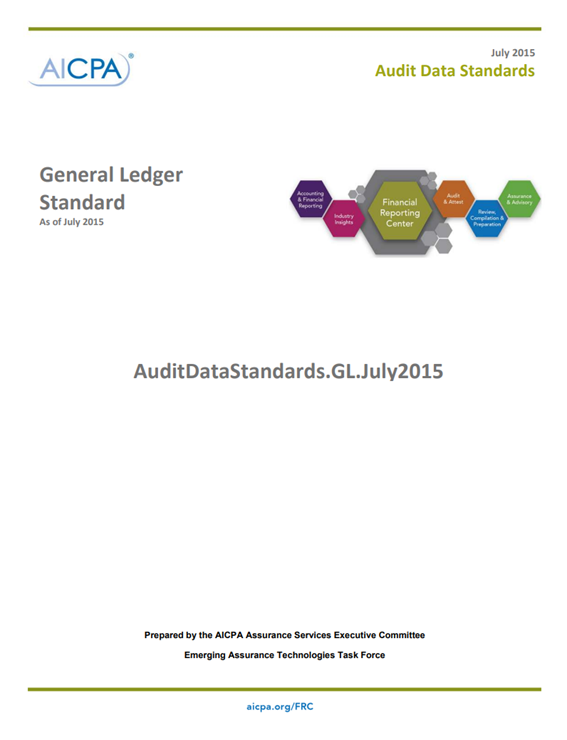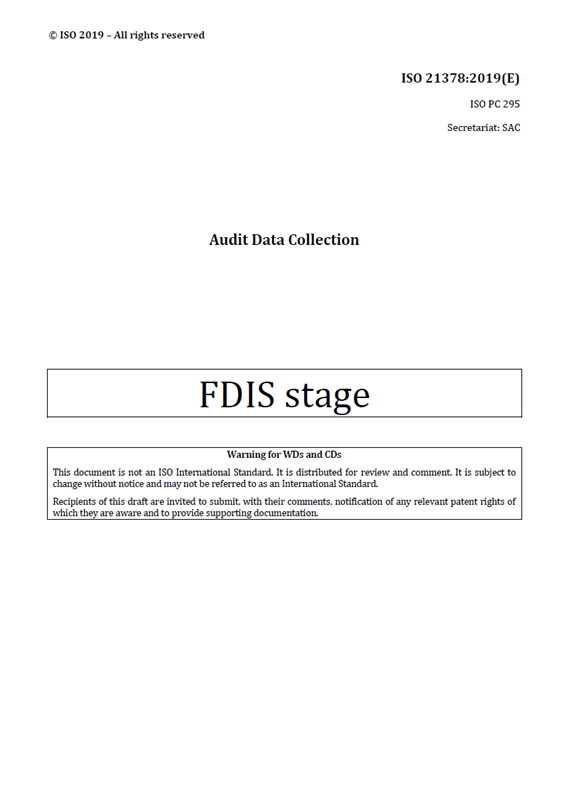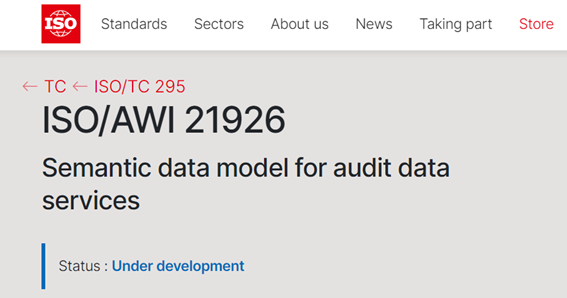Views: 1
Navigating the Future of Audit Data Service: The Role of xBRL-CSV in Modern Auditing
The advancements in audit data collection methodologies emphasize the significance of xBRL-CSV[1] in addressing the complex requirements of modern auditing. This forward-looking perspective suggests how audit data collection standards, developed by ISO/TC 295 and refined through SG1 and AWI projects, are adapting to meet the needs of real-time, comprehensive, and ESG-inclusive auditing practices.
1. History of ISO/TC 295 Audit Data Services
1.1. The China National Audit Office

Established in 2010, GB/T 24589 is a crucial standard that mandates all Chinese businesses to annually submit their financial data, aiming to boost transparency and compliance across industries. This regulation specifies that businesses must use designated software to create their financial reports in a uniform XML format. Such a requirement is essential for streamlining regulatory audits and achieving consistent financial reporting among different sectors. Adhering to GB/T 24589 not only fulfils regulatory obligations but also enhances financial management and accountability within companies, contributing to a stable economic environment marked by increased oversight and clarity. This effort is a testament to China’s dedication to the standardization of financial reporting and the fortification of economic regulation.
Specifically, data centres operating under the China National Audit Office, play a pivotal role in verifying the reliability of annual reports through the re-aggregation of collected accounting data. This verification process entails compiling financial transactions throughout the year, organizing this data in alignment with GB/T 24589 standards, and then meticulously analysing it to verify that the figures in the annual report accurately reflect the collected data. Through this detailed procedure, data centres are able to ensure the precision and integrity of financial reporting. Such rigor is vital for meeting regulatory standards and maintaining transparency within the corporate landscape. This systematic verification serves as a key mechanism for identifying any discrepancies, thereby assuring that companies comply with established financial reporting guidelines and maintain the highest levels of accountability.

1.2. The Audit Data Standards (ADS) by AICPA

The Audit Data Standards (ADS), established by the American Institute of Certified Public Accountants (AICPA), are designed to support detailed, data-based accounting audits. ADS outlines specific data formats and structures for various key financial processes, including General Ledger (GL), Procure to Pay, Sales to Cash, and Inventory. By providing a uniform approach to organizing and presenting financial data, ADS enhances the efficiency and effectiveness of audits. It ensures auditors have the detailed information needed to conduct thorough reviews, improving the reliability of financial statements and compliance with regulatory standards. The inclusion of diverse financial processes under ADS reflects its comprehensive nature, aiming to cover the full spectrum of business transactions that impact an organization’s financial statements.
By defining standardized data sets for these areas, ADS aims to streamline the audit process, making it easier for auditors to access, analyze, and verify financial information. The Audit Data Standards (ADS) defined by the American Institute of Certified Public Accountants (AICPA) specify two primary file formats for organizing financial data: the pipe-delimited text file format and the XBRL-GL format. The pipe-delimited text file format uses a vertical bar (“|”) to separate individual data elements within a text file, offering a simple and widely compatible method for structuring data in a clear, tabular form. This format is particularly useful for ensuring data can be easily read and processed by various software applications, facilitating the audit process by making data extraction and analysis more straightforward.
On the other hand, the XBRL-GL format, which stands for eXtensible Business Reporting Language – Global Ledger, is a more complex and comprehensive framework designed for global financial reporting and data exchange. It allows for the detailed and hierarchical representation of financial information, supporting a wide range of reporting needs and enhancing interoperability between different financial systems. By incorporating XBRL-GL, ADS ensures that the standards are aligned with international efforts to standardize financial reporting and make the audit process more efficient through the use of advanced data formats.
1.3. The New Work Item Proposal by the Standardization Administration of China (SAC)
The Standardization Administration of China (SAC) has proposed a New Work Item Proposal (NWIP) to the International Organization for Standardization (ISO) to establish a new Project Committee (PC) focused on “Audit Data Collection.” The proposed scope of this initiative emphasizes creating solutions for auditors to obtain accounting data efficiently. This includes specifying the format and content requirements for accounting data elements and data interface output files.
Audit practices are essential for supervising economic activities, evaluating the authenticity, lawfulness, and efficiency of financial transactions and operations. With audits categorized into government, independent, and internal types, the need for standardized access to audit data is critical. This is especially true in today’s environment, where E-business, ERP systems, and complex payment methods generate “Big Data” with dynamic, fast-growing, and diverse characteristics.
The challenge lies in the diversity of accounting software and ERPs, each with unique designs and data structures, making it difficult for auditors to directly access and interpret underlying data. Currently, the practice involves developing interface programs for each accounting software version to extract and convert data into a familiar format for auditors. However, this method is inefficient due to the vast number of software types and versions in the market, leading to a significant resource drain in developing interface modules.
The SAC’s proposal aims to address these challenges by establishing international standards for audit data collection. This would enable the development of a unified data interface standard, significantly reducing the need for multiple interface modules and conserving resources. The initiative seeks to provide standardized technical solutions to facilitate auditors’ access to and interpretation of audit data, thereby enhancing the efficiency and effectiveness of the audit process in the IT environment.
1.4. ISO 21378:2019 Audit Data Collection

The establishment of the Project Committee (PC) under the International Organization for Standardization (ISO) led to the publication of ISO 21378:2019, titled “Audit data collection.” This standard was a significant milestone in standardizing the process of collecting audit data, aiming to streamline how auditors obtain and utilize accounting data for their evaluations. Despite its achievements, the standard initially fell short in supporting various file formats such as CSV, XML, JSON, and XBRL-GL. Instead, it focused on defining tables, fields, primary keys, and reference identifiers, which was a crucial step but limited in addressing the diverse needs of data representation in the auditing process.
2. ISO/AWI 21926 Semantic Data Model for Audit Data Services

Recognizing these limitations, in 2022, Study Group 1 (SG1) embarked on research to explore international data standards that could accommodate a broader range of data formats. This effort led to the formation of the Advanced Work Item (AWI) on a Semantic Data Model for Audit Data Services[2] in 2023. Unlike its predecessor, this semantic model was designed to be file format neutral, offering a flexible framework capable of supporting a variety of file formats. This approach significantly broadened the applicability of the standard, allowing for the integration of diverse data representations into the audit data collection process.
One of the pivotal discoveries during the SG1 and AWI project was the potential of xBRL-CSV to handle hierarchical data structures efficiently and manage large volumes of data through taxonomy. xBRL-CSV combines the versatility of CSV (Comma-Separated Values) files with the structured, taxonomy-based approach of XBRL, making it an ideal format for representing complex audit data. This recognition highlighted the importance of developing standards that are not only comprehensive in their data definition capabilities but also flexible enough to adapt to various data formats, thereby enhancing the efficiency and effectiveness of audit data collection and analysis.
3. Requirements for XBRL-CSV
The requirements for XBRL-CSV, especially in the context of modern auditing needs, reflect the evolving landscape of financial reporting and the increasing complexity of business transactions.
xBRL-CSV’s flexibility in handling diverse data types and structures, along with its support for complex auditing tasks, makes it a powerful tool for modern financial reporting and audit processes. Its capabilities align with the current trends towards more detailed, real-time, and comprehensive audits, including those extending beyond traditional financial metrics to encompass sustainability and ESG factors.
Here’s an elaboration on the specified requirements:
3.1. Key Requirements
3.2. De-normalization to Support Historical Data Audit
Traditional relational database (RDB) systems face challenges when auditing historical data due to the normalized structure of transactional data and the changing nature of master data over time. Changes in an entity’s organization structure, such as cost center code, business partner code, or product code alterations, necessitate effective duration detection and matching during audits. XBRL-CSV addresses this by allowing de-normalization, where relevant transactional and master data can be stored in a single file, simplifying historical audits without the need for complex joins that traditional RDBs require.
3.3. Aggregation and Drill Down
Auditing financial statements for stock markets or tax agencies demands a detailed examination of ledger records. XBRL-CSV facilitates this by enabling data aggregation for verification purposes and providing mechanisms to drill down from aggregated data to the base ledger data. This capability ensures auditors can easily navigate from summarized financial statements back to the original, detailed transactions, enhancing the transparency and verifiability of reported figures.
3.4. Verification of Related Transactional Business Document and Ledger Data
The auditing process often requires verification of transactional documents against ledger entries, such as through two-way or three-way matching (matching contracts, orders, delivery notes, invoices, and payment records with the corresponding ledger entries). XBRL-CSV supports the association of these various documents and data, enabling auditors to verify the completeness and accuracy of transactions and their corresponding entries in the financial records.
3.5. Real-Time Auditing
XBRL-CSV can define internal control rules for transaction handling and bookkeeping within a verification taxonomy. This allows for the real-time checking of transactions against predefined rules, facilitating immediate identification and correction of discrepancies or anomalies. Real-time auditing enhances the efficiency and effectiveness of the audit process, ensuring financial integrity and compliance on an ongoing basis.
3.6. Sustainability Report, ESG Report Requirements
Beyond traditional financial data, auditing increasingly encompasses sustainability and ESG (Environmental, Social, and Governance) reporting, which requires integrating accounting data with physical data such as carbon footprints. XBRL-CSV is well-suited for this task, as it can handle data generated from IoT devices or plant operation computers, typically output in CSV-like flat files. This allows for the comprehensive reporting of both financial and non-financial data, meeting the growing demand for holistic and transparent corporate accountability.
4. Leveraging XBRL for Sustainability Report, ESG Reporting
In leveraging XBRL for Sustainability Report, ESG Reporting to achieve comprehensive insights, the focus shifts towards creating a standardized framework that not only facilitates the verification of reported data but also delves into the underlying detail data. The use of XBRL, particularly in its xBRL-CSV format, stands as a testament to the adaptability and depth of analysis it can provide, particularly in the domain of ESG (Environmental, Social, and Governance) reporting, which is becoming increasingly critical in today’s sustainability-focused business environment.
4.1. Advantages and Requirements
-
Standardization and Semantic Integration: XBRL-CSV offers a unique advantage in standardizing Sustainability Report, ESG Reporting data across various sectors by integrating a semantic model. This model helps in interpreting complex data structures, enabling auditors and stakeholders to gain profound insights into a company’s sustainability efforts. The semantic layer provided by XBRL facilitates a deeper understanding of non-financial data, such as environmental impact metrics, by defining and categorizing each data point in a comprehensible manner.
-
Enhanced Data Verification: The structured format of XBRL-CSV allows for efficient verification of reported data against its detailed background information. This capability is crucial for auditors tasked with validating the vast array of data encompassed in Sustainability and ESG reports, ensuring that the data is not only accurate but also consistent with the company’s sustainability claims.
-
Efficient Data Handling and Traceability: With its machine-readable format, XBRL-CSV streamlines the auditing process, enabling the automation of data validation tasks. The versioning capability inherent in XBRL also facilitates traceability, allowing auditors to track data modifications and maintain a clear audit trail over time. This historical traceability is essential for understanding the evolution of a company’s Sustainability and ESG performance and the integrity of its reporting.
-
Integrated Analysis and Interoperability: XBRL-CSV supports an integrated analysis of financial and non-financial data, offering auditors a holistic view of a company’s performance. Its interoperability across different platforms and software reduces friction in the auditing process, ensuring seamless analysis of Sustainability and data.
4.2. Requirements for Realizing these Advantages with XBRL
-
Deployment of xBRL-CSV: To fully harness these benefits, there’s a need for widespread deployment of xBRL-CSV formats. This deployment facilitates the creation of machine-readable, standardized Sustainability and data, enabling efficient aggregation, analysis, and verification.
-
Hierarchical Tidy Data Approach: Adopting a hierarchical tidy data approach simplifies the organization of data, enhancing its quality and making it more accessible for auditors. This approach aligns with the structured, taxonomy-based capabilities of XBRL, allowing for detailed representation and analysis of Sustainability and ESG metrics.
-
Legal and Systematic Framework Development: For effective standardization and verification of Sustainability and ESG reporting, developing a legal and systematic framework is essential. This involves creating standardized reporting guidelines and technological solutions, like XBRL-GL, to ensure cohesive and comprehensive Sustainability and ESG disclosures.
-
Collaborative Standardization Efforts: Engaging with international organizations and stakeholders to harmonize Sustainability and ESG reporting standards is crucial. This collaborative effort aims to align reporting practices globally, ensuring a unified approach to sustainability reporting and data verification.
XBRL provides a robust framework for the standardized reporting and verification of Sustainability and ESG data. By focusing on the standardization and verification of both reported and detailed background data, XBRL facilitates a transparent, accurate, and insightful reflection of a company’s sustainability initiatives, supporting informed decision-making and promoting accountability in Sustainability and ESG reporting.
Q.E.D.
Nobuyuki SAMBUICHI
Advisor at XBRL Japan
ISO/TC295 Audit data services
Convener at SG1 Semantic model
Co-project leader at WG1 AWI 21926 Semantic data model for audit data services
Head of delegation JISC
Liaison representative from XBRL International Inc.


